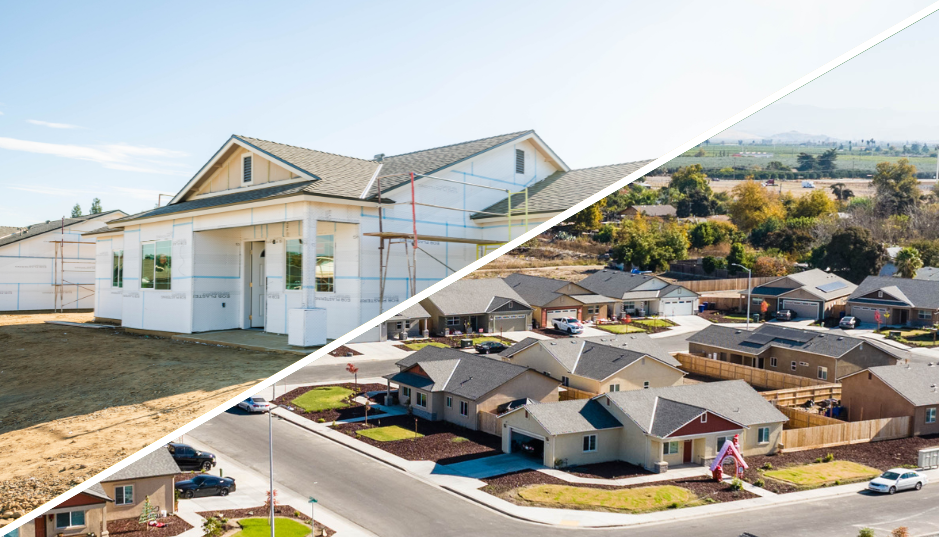Tom’s Take – The Case for Homeownership
Tom’s Take – The Case for Homeownership

Posted on April 1, 2024
The housing crisis in America, most severely felt in California, has many facets. Income inequality, stagnant wage growth, rising rents and home prices, paltry housing production, and high-interest rates locking homeowners into existing homes all contribute to the problem. Homelessness and housing instability, cost-burdened renters, and lack of opportunity to buy a first home are symptoms in both urban and rural markets.
In this environment, it is tempting to take a triage approach to the crisis, focusing on the most dramatic needs first. This means the homeless and extremely low-income renters. SHE focuses a significant portion of its current housing efforts on this exact population, so we get it. But solely directing resources to this need, however well intentioned, is nearsighted.
Self-Help Enterprises was born of an effort to provide an equitable opportunity for Latino farmworkers to achieve the dream of homeownership. This was the right thing to do back then and continues to be a core activity for the organization today.
It has been well established that the central pathway to economic stability and building generational wealth is through homeownership. In recent years, the wealth gap between whites and people of color (particularly blacks) is mainly attributable to the relative percentages of each population that has achieved homeownership. It is also a historical certainty (chronicled in such works as The Color of Law, by Richard Rothstein) that, in addition to racist market practices such as redlining, the federal government was also a key player in such discrimination through the Federal Housing Administration, among other public programs.
Given such truths, it is disturbing that homeownership gets kicked to the curb at the first sign of resource scarcity for affordable housing development. That is exactly what is happening at the moment. California is in a deep budget crisis, with deficits approaching $70 billion or more. Our governor – heretofore the most committed funder of affordable housing in California’s history – has proposed a budget that not only lacks any commitment to expanding homeownership but claws back committed funding for the CalHome program. And the polarized environment in Congress makes federal funding for housing a yearly exercise in futility. The chilling effect on homeownership programs for low-income wage earners is palpable.
The saddest part of this is that we have proof of concept with our mutual self-help housing program, as does other sweat equity models such as Habitat for Humanity chapters around the country. At SHE, we are also trying to ramp up our infill development program that will create additional homeownership opportunities. And our homebuyer assistance programs are lacking only available for-sale housing units for low-income homebuyers to purchase in order on to go to scale.
People experiencing homelessness and other extremely low-income people deserve our attention and our resources. It is indeed a disgrace that so many people are unhoused in the most prosperous country in the world. We also must build more housing affordable to low income and workforce renters. But we mustn’t just do these things alone. We also need to make sure the dream of home ownership is available to more Americans. Homeownership does many things, including providing a platform to right historical wrongs and break the cycle of poverty for entire families. If we believe in racial justice, we must ensure a pathway to homeownership for first-generation low-income homebuyers. It’s the right thing to do.
Recent Posts
Recent Comments
Archives
- April 2025
- February 2025
- January 2025
- December 2024
- November 2024
- October 2024
- September 2024
- August 2024
- July 2024
- June 2024
- April 2024
- February 2024
- January 2024
- December 2023
- October 2023
- September 2023
- August 2023
- July 2023
- June 2023
- May 2023
- April 2023
- March 2023
- February 2023
- December 2022
- October 2022
- September 2022
- August 2022
- July 2022
- May 2022
- December 2021
- October 2021
- September 2021
- August 2021
- July 2021
- June 2021
- May 2021
- April 2021
- March 2021
- January 2021
- December 2020
- November 2020
- October 2020
- September 2020
- July 2020
- June 2020
- May 2020
- April 2020
- March 2020
- February 2020
- January 2020
- December 2019
- November 2019
- October 2019
- September 2019
- August 2019
- July 2019
- June 2019
- May 2019
- April 2019
- March 2019
- February 2019
- January 2019
- December 2018
- November 2018
- October 2018
- September 2018
- August 2018
- July 2018
- June 2018
- May 2018
- April 2018
- March 2018
- February 2018
- January 2018
- December 2017
- November 2017
- October 2017
- September 2017
- August 2017
- July 2017
- June 2017
- May 2017
- April 2017
- March 2017
- February 2017
- January 2017
- December 2016
- November 2016
- October 2016
- September 2016
- August 2016
- July 2016
- June 2016
- May 2016
- April 2016
- March 2016
- February 2016
- December 2015
- November 2015
- October 2015
- September 2015
- August 2015
- July 2015
- June 2015
- May 2015
- April 2015
- February 2015
